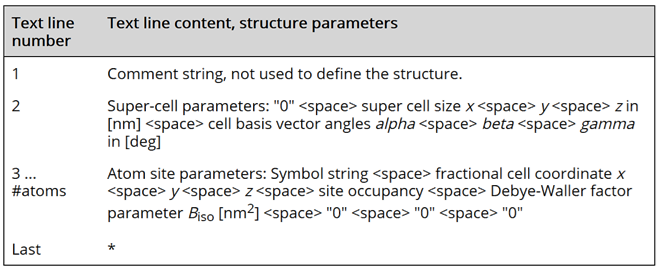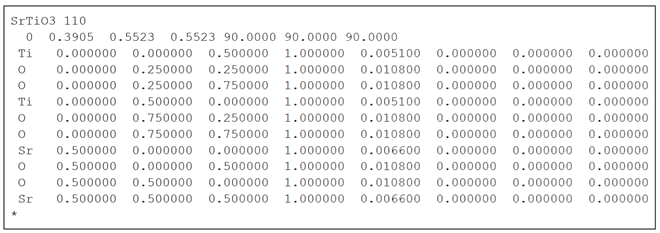The program CELSLC is used to calculate object transmission functions aka. phase gratings from atomic structure models. Files describing the atomic structure and other parameters are specified as arguments upon calling. The output is oganized in so-called slice files, which are input for multislice calculations with the program MSA or the Dr. Probe GUI.


Input
Required input data for phase grating calculations with CELSLC is an atomic structure model in form of a super-cell containg atomic sites. The atomic structure data can be supplied either in form of a CEL file or a CIF file. Such files contain information about the dimension of the super-cell, involved atom types, atomic coordinates within the super-cell, site occupancies, and the strength of thermal vibrations. The latter is accepted in terms of isotropic Biso or Uiso values.
CEL File Format
An image simulation with Dr. Probe requires an atomic structure model as input. This input may be provided in form of a text file, which contains general super-cell parameters, as well as atom types, atomic positions, site occupancies, and thermal vibration parameters.
A super-cell file in the CEL file format is of the general form shown left.
The three “0” (zero) characters of the atom site parameters are placeholders which may be used in future versions to define directional thermal vibration parameters.
On the left is also an example describing a super-cell of SrTiO3 in [110] orientation.
Example: Creation of a SrTiO3 [110] super cell for STEM simulations.







